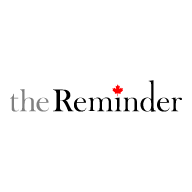Perhaps no other article in the 70-year history of The Reminder has garnered as much interest and feedback as our recent piece on the controversial Chief Clarence Louie.
In print, the article touched off quite a conversation among readers. On our website, the piece has received about 100,000 views – a seemingly unheard-of figure for a smaller-town news source.
The article also drew 40,000 Facebook likes and 26 website comments (and counting), and saw multiple newspapers seek permission to reprint.
Doug Bing, a Liberal MLA in BC, liked what Louie had to say so much that he posted a link to the article on his Facebook page.
“I was struck at how blunt he was,” Bing later told The News of Maple Ridge and Pitt Meadows.
“Blunt” is an apt means of describing Louie, who addressed area residents, including many indigenous youth, at the RH Channing Auditorium on Feb. 10.
Using language only a long-serving chief could get away with, he urged indigenous people to “get a damn job” and understand that “Indian time doesn’t cut it.”
Louie touted the high employment rate among members of his Osoyoos Indian Band in BC. Located in the beautiful Okanagan Valley of BC, Osoyoos operates more businesses per capita than any other reserve in Canada. Among them: three resorts, a golf course and a convenience store.
There is much to be said about taking responsibility for our lives, but is Louie oversimplifying the plight of indigenous people, and the isolated reserves many of them call home, with his brand of tough love?
Chris Corrigan, who commented on the article on The Reminder website, seems to think so.
“His reserve is in a prime location to take advantage of a diversified economic market through tourism, agriculture, services and real estate,” Corrigan wrote. “Only a handful of reserves in Canada have that kind of luck, and they mostly do pretty well too.”
A good point. Starting up a resort or golf course for wealthy folks is going to be much easier in the sunny Okanagan Valley than in cold, isolated Pelican Narrows or Pukatawagan.
Louie also seemed to gloss over the issue of affordability. While it is gratifying to see most of his people achieve self-sufficiency by working (largely) in the service industry, one wonders if they could pay their bills working in that notoriously low-paying sector while off-reserve.
If Louie were to tell a young indigenous person to “get a damn job” at a convenience store in Vancouver, is that person going to be as successful in a city where the average house costs $1.83 million?
Let’s not pretend, either, that indigenous people can simply show up at a merchant’s door and declare, “I’m ready to work, hire me.” They’re living within the same seven per cent unemployment rate as other Canadians. And if they’re on a reserve with no means to relocate, the jobless rate is probably going to be 50 per cent, 70 per cent – maybe even 90 per cent.
To boot, too many indigenous people struggle with addiction, lack of supports and a sense of alienation. One could view these realities as “excuses,” and in theory every individual has the power to “get over it.”
But as we know, regardless of which race one belongs to, that doesn’t always happen. To his credit, Louie noted during his speech that a job is no cure-all.
So, yes, heed Louie’s words. Take responsibility. Get educated. Respect yourself. Strive for greatness. This is solid advice for anyone.
But realistically speaking, the answer to the plight of Canada’s indigenous people lies somewhere between Louie’s straight talk and a recognition that deeply embedded problems cannot always be finger-wagged away.
Local Angle is published on Fridays.



